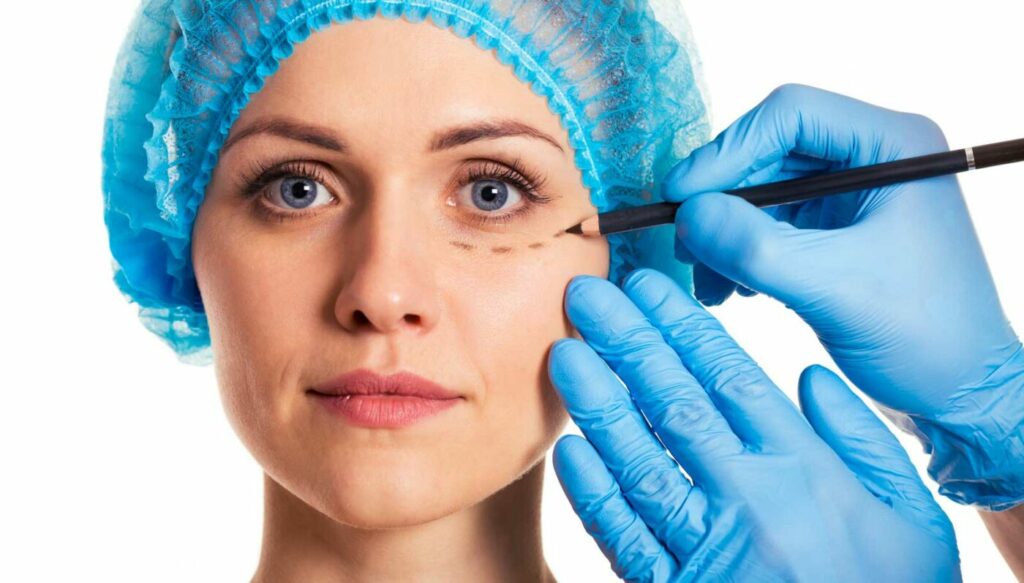Eyelid surgery, also known as blepharoplasty, is a common procedure that can help improve the appearance of the eyes. It can reduce the appearance of wrinkles, bags, and sagging skin around the eyes. This guide will provide a step-by-step overview of what to expect during eyelid surgery.
Step 1: Consultation
Before undergoing eyelid surgery, you will need to meet with your surgeon for a consultation. During this appointment, your surgeon will discuss your goals and expectations for the procedure. They will also assess your medical history and perform a physical examination to determine if you are a good candidate for the surgery.
Step 2: Pre-operative Preparation.
Before the surgery, your surgeon will provide you with instructions on how to prepare. This may include avoiding certain medications and supplements, quitting smoking, and avoiding alcohol.
Step 3: Surgery
On the day of the surgery, you will be given anesthesia to ensure your comfort during the procedure. Your surgeon will then make incisions in the upper and/or lower eyelids to remove excess skin and fat. The incisions will be closed with sutures or skin glue.
Step 4: Recovery
After the surgery, you will need to rest and avoid strenuous activities for several weeks. Your surgeon will provide you with instructions on how to care for your eyes during the recovery period. This may include applying cold compresses, taking medications, and avoiding direct sunlight.
Step 5: Follow-up Appointments
After the surgery, you will need to attend follow-up appointments with your surgeon. During these appointments, your surgeon will assess your progress and make any necessary adjustments.
Eyelid surgery can help improve the appearance of the eyes and reduce the appearance of wrinkles, bags, and sagging skin. By following this step-by-step guide, you can better understand what to expect during the procedure.
How to Prepare for Eyelid Surgery: Pre-Op Tips and Advice
Eyelid surgery, also known as blepharoplasty, is a popular cosmetic procedure that can help to reduce the appearance of wrinkles and sagging skin around the eyes. If you are considering eyelid surgery, it is important to understand the pre-operative process and to take the necessary steps to ensure a safe and successful outcome.
Before undergoing eyelid surgery, it is important to consult with a board-certified plastic surgeon who is experienced in performing this type of procedure. During the consultation, the surgeon will evaluate your medical history and discuss the potential risks and benefits of the procedure. It is also important to discuss any medications or supplements that you are taking, as some of these may need to be stopped prior to the surgery.

Preparation
In preparation for the procedure, it is important to stop smoking at least two weeks prior to the surgery. Smoking can interfere with the healing process and increase the risk of complications. Additionally, it is important to avoid taking any medications that can thin the blood, such as aspirin or ibuprofen, as these can increase the risk of bleeding during the procedure.
It is also important to arrange for a friend or family member to drive you home after the procedure. You may experience some swelling and bruising around the eyes, and it is important to have someone available to help you with any post-operative care that may be needed.
Finally, it is important to follow any pre-operative instructions provided by your surgeon. This may include avoiding certain foods or drinks prior to the procedure, as well as avoiding any strenuous activities. Following these instructions can help to ensure a safe and successful outcome.
By taking the necessary steps to prepare for eyelid surgery, you can help to ensure a safe and successful outcome. Be sure to consult with a board-certified plastic surgeon and follow all pre-operative instructions provided by your surgeon.
Understanding the Different Types of Eyelid Surgery
Eyelid surgery, also known as blepharoplasty, is a surgical procedure that can improve the appearance of the eyelids. It can be used to correct drooping upper lids, puffy bags below the eyes, and excess skin and fine wrinkles of the lower lids. There are several types of eyelid surgery, each designed to address a specific issue.
Upper Blepharoplasty: This procedure is used to correct drooping upper eyelids. It involves removing excess skin and fat from the upper eyelids, which can help to reduce the appearance of wrinkles and improve vision.
Lower Blepharoplasty: This procedure is used to correct puffy bags below the eyes. It involves removing excess fat and skin from the lower eyelids, which can help to reduce the appearance of wrinkles and improve vision.
Transconjunctival Blepharoplasty: This procedure is used to correct puffy bags below the eyes without making any external incisions. It involves removing excess fat from the lower eyelids through an incision inside the lower eyelid.
Canthoplasty: This procedure is used to correct drooping lower eyelids. It involves making an incision in the corner of the eye and tightening the lower eyelid muscles to lift the lower eyelid.
Brow Lift: This procedure is used to correct drooping eyebrows. It involves making an incision in the forehead and lifting the eyebrows to a more youthful position.
Eyelid surgery can help to improve the appearance of the eyelids and reduce the appearance of wrinkles and bags. It is important to discuss your goals and expectations with your doctor before undergoing any type of eyelid surgery.
What to Expect During Recovery After Eyelid Surgery
Recovery after eyelid surgery is a process that requires patience and care. It is important to follow your doctor’s instructions carefully to ensure a successful recovery.
Immediately after surgery, you may experience some swelling, bruising, and discomfort. Your doctor may prescribe medication to help manage any pain. You may also be instructed to apply cold compresses to the area to reduce swelling.
It is important to keep your head elevated for the first few days after surgery. This will help reduce swelling and bruising. You should also avoid strenuous activities and exercise for at least two weeks.
Your doctor will likely recommend that you wear sunglasses to protect your eyes from the sun and wind. You should also avoid wearing contact lenses for at least two weeks.
You may be instructed to use lubricating eye drops to keep your eyes moist and comfortable and avoid rubbing your eyes, as this can cause irritation and delay healing.
Your doctor will likely schedule follow-up appointments to monitor your progress. During these appointments, your doctor will check for signs of infection and evaluate your healing.
It is important to follow your doctor’s instructions carefully during recovery. Doing so will help ensure a successful outcome and reduce the risk of complications.

The Benefits of Eyelid Surgery: A Closer Look at the Results
Eyelid surgery, also known as blepharoplasty, is a popular cosmetic procedure that can help to improve the appearance of the eyes. It can be used to reduce the appearance of wrinkles, bags, and sagging skin around the eyes, as well as to create a more youthful and alert look. The procedure is relatively safe and can be performed on both the upper and lower eyelids.
The results of eyelid surgery can be dramatic and long-lasting. Patients can expect to see a more youthful and refreshed appearance, with a smoother, more even skin tone around the eyes. The procedure can also help to reduce the appearance of wrinkles and fine lines, as well as to reduce puffiness and bags under the eyes. In addition, eyelid surgery can help to improve vision by removing excess skin that may be blocking the line of sight.
The benefits of eyelid surgery extend beyond the aesthetic. The procedure can also help to reduce the risk of eye infections and other eye-related issues. By removing excess skin and fat, the eyelids are better able to protect the eyes from dust, dirt, and other irritants. This can help to reduce the risk of eye infections and other eye-related issues.
Eyelid surgery can help to improve the overall health of the eyes
In addition, eyelid surgery can help to improve the overall health of the eyes. By removing excess skin and fat, the eyelids are better able to protect the eyes from dust, dirt, and other irritants. This can help to reduce the risk of eye infections and other eye-related issues.
Finally, eyelid surgery can help to improve self-confidence. Many people feel self-conscious about the appearance of their eyes, and eyelid surgery can help to improve the overall look of the eyes. This can help to boost self-esteem and confidence, allowing patients to feel more comfortable in their own skin.
Overall, eyelid surgery can provide a number of benefits, both aesthetic and functional. The procedure can help to reduce the appearance of wrinkles, bags, and sagging skin around the eyes, as well as to improve vision and reduce the risk of eye infections and other eye-related issues. In addition, it can help to boost self-confidence and improve overall health. For these reasons, eyelid surgery is an increasingly popular cosmetic procedur

